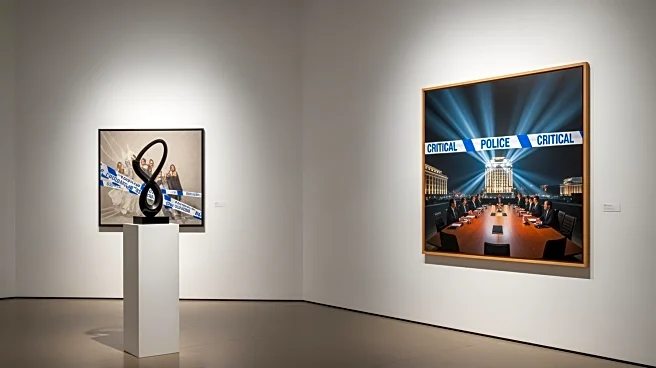What's Happening?
Austrian billionaire Klemens Hallmann is compelled to sell his 32 percent stake in the $23 million gold cube sculpture by German artist Niclas Castello due to bankruptcy proceedings. The 400-pound, 24-karat
gold artwork, which gained viral attention after its 2022 debut in Central Park, was initially not intended for sale. However, Hallmann's financial difficulties have led to the liquidation of his stake, transforming the artwork from a symbol of crypto-era speculation into an object of financial liquidation. The cube, valued at approximately $23 million based on current gold prices, was part of a broader initiative involving a crypto token and NFT platform launched by Castello.
Why It's Important?
The sale of Hallmann's stake in the gold cube highlights the volatile intersection of art, finance, and cryptocurrency. The artwork, initially a conceptual piece meant to symbolize the fusion of traditional and digital economies, now serves as a cautionary tale about the risks of financial speculation in the art world. This development underscores the potential instability in art investments tied to volatile markets like cryptocurrency. Stakeholders in the art and finance sectors may view this as a reminder of the financialization of contemporary art and the inherent risks involved.
What's Next?
As Hallmann's financial empire continues to unravel, the sale process of his stake in the gold cube remains uncertain. The outcome will depend on the artwork's ownership structure and market interest. The art community and financial investors will likely monitor the situation closely, as it may influence future art investments and the perception of art as a financial asset. Additionally, the resolution of Hallmann's bankruptcy proceedings could set precedents for handling art assets in financial distress.
Beyond the Headlines
The situation raises questions about the ethical implications of art as a speculative asset and its role in financial markets. The gold cube's journey from a conceptual art piece to a financial asset highlights the cultural shifts in how art is perceived and valued. This case may prompt discussions about the sustainability of art investments linked to speculative markets and the responsibilities of artists and investors in such ventures.













